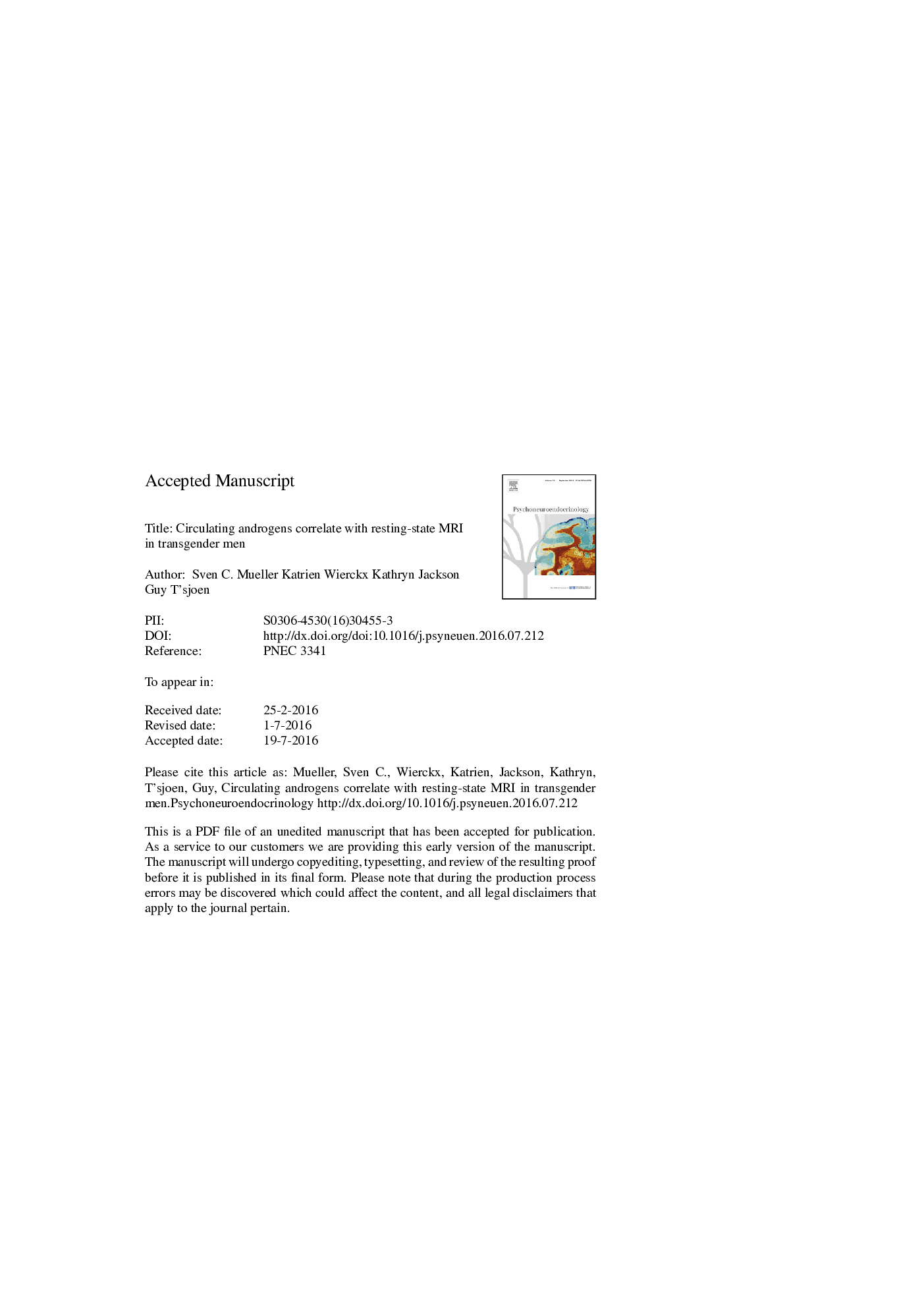| Article ID | Journal | Published Year | Pages | File Type |
|---|---|---|---|---|
| 6817881 | Psychoneuroendocrinology | 2016 | 23 Pages |
Abstract
Despite mounting evidence regarding the underlying neurobiology in transgender persons, information regarding resting-state activity, particularly after hormonal treatment, is lacking. The present study examined differences between transgender persons on long-term cross-sex hormone therapy and comparisons on two measures of local functional connectivity, intensity of spontaneous resting-state activity (low frequency fluctuations, LFF) and local synchronization of specific brain areas (regional homogeneity, ReHo). Nineteen transgender women (TW, male-to-female), 19 transgender men (TM, female-to-male), 21 non-transgender men (NTM) and 20 non-transgender women (NTW) underwent a resting-state MRI scan. The results showed differences between transgender persons and non-transgender comparisons on both LFF and ReHo measures in the frontal cortex, medial temporal lobe, and cerebellum. More interestingly, circulating androgens correlated for TM in the cerebellum and regions of the frontal cortex, an effect that was associated with treatment duration in the cerebellum. By comparison, no associations were found for TW with estrogens. These data provide first evidence for a potential masculinization of local functional connectivity in hormonally-treated transgender men.
Keywords
Related Topics
Life Sciences
Biochemistry, Genetics and Molecular Biology
Endocrinology
Authors
Sven C. Mueller, Katrien Wierckx, Kathryn Jackson, Guy T'Sjoen,
